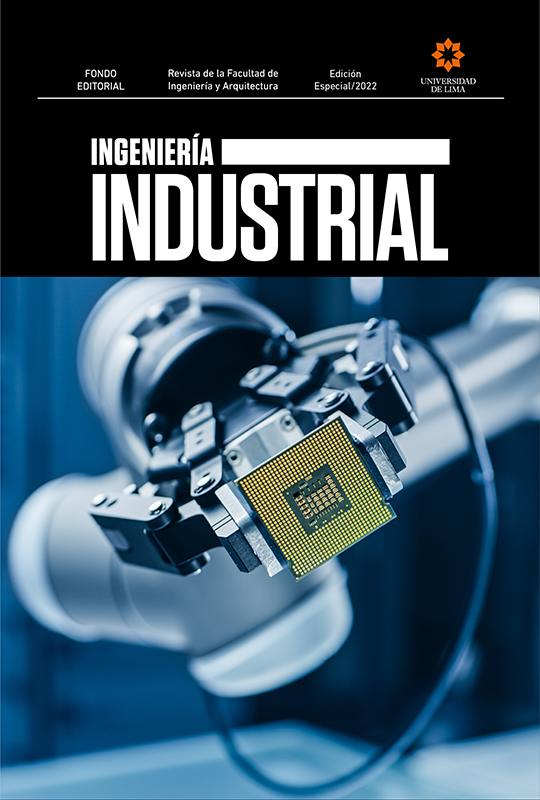Recognition of facial expressions and personal features as a tool to identify people in a public transport system
DOI:
https://doi.org/10.26439/ing.ind2022.n.5811Keywords:
artificial intelligence, human face recognition (computer science), computer algorithms, machine learningAbstract
The use of artificial intelligence nowadays has many applications. This paper proposes the use of artificial intelligence based facial recognition using machine learning to identify through Python language, people who are missing, abducted or have committed crimes. The Jetson Nano development platform identifies and sends an alert via SMS text message to the monitoring and information control units for decision making and response. This device is based on the Ubuntu operating system, which can work standalone, is small, and allows easy accessibility in confined spaces. The tool can also predict people’s moods through gestures made on the face with the application of the Viola-Jones algorithm.
Downloads
References
Andrago Calvachi, M. A. (2019). Uso de reconocimiento facial de emociones basado en técnicas de deep learning para el mejoramiento de la educación [Tesis de maestría, Universidad Israel]. Universidad Israel, Repositorio Digital. http://repositorio.uisrael.edu.ec/handle/47000/2297
Duró, V. E. (2001). Evaluación de sistemas de reconocimiento biométrico. Escuela Universitaria Politécnica de Mataró, Departamento de Electrónica y Automática.
Estévez Martín, A., & Ramírez Barredo, B. (2018). Smartcity: la inteligencia artificial en la ciudad del futuro. Estudio del caso Amazon Go. En Actas ICONO14. VI Congreso Internacional Ciudades Creativas (pp. 199-215). Asociación de Comunicación y Nuevas Tecnologías.
Gualdrón, O. E., Duque Suárez, O. M., & Chacón Rojas, M. A. (2013). Diseño de un sistema de reconocimiento de rostros mediante la hibridación de técnicas de reconocimiento de patrones, visión artificial e IA, enfocado a la seguridad e interacción robótica social. Mundo FESC, 3(6), 16-28. https://www.fesc.edu.co/Revistas/OJS/index.php/mundofesc/article/view/3
Lienhart, R., & Maydt, J. (2002). An extended set of Haar-like features for rapid object detection. Proceedings. International Conference on Image Processing (vol. I, pp. 900-905). DOI: 10.1109/ICIP.2002.1038171
Planells Lerma, J. (2009). Implementación del algoritmo de detección facial de Viola-Jones [Trabajo de fin de carrera]. Universitat Politècnica de València. Escola Tècnica Superior d’Enginyeria Informàtica.
Viola, P., Jones, M. J., & Snow, D. (2005). Detecting pedestrians using patterns of motion and appearance. International Journal of Computer Vision, 63(2), 153-161. https://doi.org/10.1007/s11263-005-6644-8
Wei, Y., Bing, X., & Chareonsak, C. (2004). FPGA implementation of AdaBoost algorithm for detection of face biometrics. En IEEE International Workshop on Biomedical Circuits and Systems (pp. S١/6-17). DOI: 10.1109/BIOCAS.2004.1454161
Zerrouki, N., Harrou, F., Sun, Y., & Houacine, A. (2018). Vision-based human action classification using adaptive boosting algorithm. IEEE Sensors Journal, 18(12), 5115-5121. DOI: 10.1109/JSEN.2018.2830743



